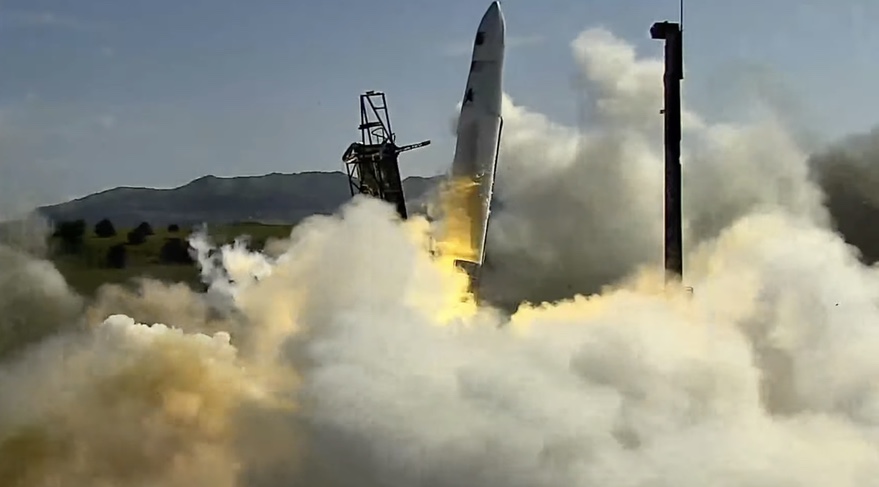Updated 8:40 p.m. Eastern with comments from media call.
WASHINGTON — Astra’s third attempt to reach orbit failed Aug. 28 when its Rocket 3.3 vehicle struggled to get off the launch pad because of an engine shutdown and eventually failed in flight.
The small launch vehicle, designated LV0006 by Astra, ignited its five first-stage engines at about 6:35 p.m. Eastern from Pacific Spaceport Complex – Alaska on Kodiak Island. Various issues, including taking additional time to load propellant and update software configurations, delayed the launch from the opening of the window at 4 p.m. Eastern.
The rocket, instead of immediately ascending vertically, tipped and moved sideways, hovering just about the ground. It took nearly 20 seconds for the sideways motion to stop, at which point the rocket started to ascend.
The rocket continued going up until about two and a half minutes after liftoff, near the end of the first-stage burn. Onboard video broadcast on the launch webcast showed the engines shutting down and the vehicle tumbling, with a call to “terminate” heard on the launch audio.
In a media call about 90 minutes after the failure, Chris Kemp, co-founder and chief executive of Astra, said that one of the five first-stage engines failed less than a second after liftoff. “We’re still looking into why that happened,” he said. “The guidance system was able to maintain control and the rocket began flying horizontally for a few seconds until we burned off enough propellants to begin resuming with our liftoff.”
The range, he said, issued the command to terminate thrust from the engines two and a half minutes into the flight because the vehicle was outside its licensed trajectory. The vehicle reach a peak altitude of about 50 kilometers before crashing into the ocean downrange from Kodiak Island, causing no damage or injury to the public.
“We collected a tremendous amount of data from the flight, and we have Launch Vehicle 7 at the stage of production where we’ll be able to incorporate everything we learned before sending it up to Kodiak and launching again,” he said.
A launch attempt the previous day was aborted an instant after engine ignition, which Astra later said was because the engine thrust wasn’t ramping up as fast as expected. “Right now we have no reason to believe these are related,” Kemp said.
Video of the launch showed the rocket appearing to come into contact with the launch mount, at which point it tipped and moved sideways. “We’re still studying the data and looking for any fingerprints of that,” he said, but suggested any such contact would have happened after the engine shutdown.
“We’re incredibly impressed with the guidance system,” he added. “Given that we had an engine that shut down so early into the flight, the fact that the rocket was able to maintain control and continue the flight and resume the trajectory was spectacular.”
The launch was Astra’s third attempt to reach orbit in less than year, all of which failed. A September 2020 launch of its Rocket 3.1 failed when its guidance system caused the vehicle to drift from its planned trajectory, triggering an engine shutdown shortly after liftoff. A second launch in December 2020 of its Rocket 3.2 almost reached orbit, but the upper-stage engine shut down prematurely when it ran out of fuel.
Despite the second failure, Astra declared it had demonstrated “orbital launch capability” because the launch would have been successful launching from a low-inclination site, like Cape Canaveral given the assist that the Earth’s rotation provides.
Astra made several upgrades for this, the first Rocket 3.3 vehicle, including stretched propellant tanks. “Making any changes to a complex system like a rocket always involves risk,” Kemp said in an Aug. 12 earnings call. “We appreciate this, but also believe that maximizing our learning requires us to make advances and take appropriate technical risks.”
This launch was the first of two for the U.S. Space Force under a contract announced Aug. 5. This mission, designated STP-27AD1 by the Space Force, carried only a test payload to measure the launch environment of the rocket, and would have remained attached to the upper stage even if the rocket reached orbit.
